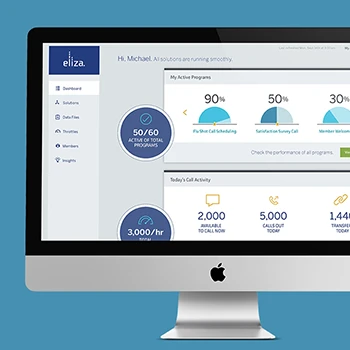What exactly is ecosystem mapping and when should organizations use it?
Ecosystem mapping visualizes the relationships, dependencies, and interactions within complex business systems at a given time. Unlike journey maps that show movement through time, ecosystem maps emphasize state and structure—revealing how people, technologies, partners, and processes connect to deliver experiences. Organizations use ecosystem mapping when designing new products, entering new markets, or understanding complex stakeholder relationships.
Tip: Use ecosystem mapping when you need to understand relationships and dependencies rather than sequential processes or user flows.
How does ecosystem mapping differ from journey mapping and service blueprints?
Journey maps follow users through time-based sequences, service blueprints detail operational processes, while ecosystem maps capture relationships and structure at a specific point in time. Ecosystem maps show who and what is connected, journey maps show progression through stages, and service blueprints show front-stage and back-stage operations. Each serves different strategic purposes and analysis needs.
Tip: Use ecosystem maps first to understand the system context, then create journey maps and service blueprints for specific process improvement within that system.
What types of challenges does ecosystem mapping help solve?
Ecosystem mapping helps solve complex system challenges like identifying bottlenecks, understanding stakeholder relationships, finding innovation opportunities, and planning digital transformation initiatives. It reveals weak points in systems, coordination gaps between stakeholders, and areas where new products or services could create value. The approach works best for multi-stakeholder challenges requiring system-level thinking.
Tip: Apply ecosystem mapping to challenges involving multiple departments, external partners, or complex stakeholder relationships rather than simple linear processes.
How does Akendi's Experience Thinking framework enhance ecosystem mapping?
Our Experience Thinking framework ensures ecosystem maps consider how brand, content, product, and service experiences interconnect across the entire system. Rather than mapping only operational relationships, we examine how experiences flow between touchpoints and stakeholders. This reveals opportunities to strengthen experience coherence and identify gaps where disconnected touchpoints create friction.
Tip: Map experience relationships alongside operational relationships to identify opportunities for improving end-to-end experience quality.
What's the difference between current state and future state ecosystem mapping?
Current state mapping documents existing relationships, dependencies, and system structure as they exist today. Future state mapping envisions how relationships and structure should look after implementing changes or introducing new elements. The difference between current and future states reveals transformation requirements, change impacts, and implementation priorities for achieving desired system evolution.
Tip: Always start with current state mapping to establish baseline understanding before designing future state scenarios and transformation roadmaps.
When is ecosystem mapping most valuable in the product development lifecycle?
Ecosystem mapping is most valuable during early strategy phases when understanding system context is critical for product success. It's particularly important for products that integrate with existing systems, serve multiple stakeholders, or require ecosystem partnerships. Mapping helps identify integration requirements, stakeholder needs, and system constraints before detailed product development begins.
Tip: Conduct ecosystem mapping before major product decisions to avoid building solutions that don't integrate well with existing system realities.
How detailed should ecosystem maps be for different purposes?
Map detail depends on purpose and audience. Strategic ecosystem maps use high-level relationships for executive decision-making. Operational maps include detailed processes for implementation planning. Innovation maps focus on opportunity spaces and potential connections. The key is matching detail level to decision-making needs rather than creating overly complex visualizations that obscure insights.
Tip: Start with fewer elements and simpler relationships, adding detail incrementally as understanding develops and specific needs become clear.
What's Akendi's process for conducting ecosystem mapping engagements?
We begin with stakeholder interviews to understand existing knowledge and system context, then conduct collaborative workshops to create initial ecosystem inventories. Through structured mapping sessions, we identify frames of reference, document relationships, and analyze system structure. The process includes validation sessions, insight synthesis, and strategic recommendations for system optimization or transformation.
Tip: Engage stakeholders throughout the mapping process rather than conducting research in isolation to ensure maps reflect real system dynamics and gain organizational buy-in.
How do you determine the right scope and boundaries for ecosystem maps?
Scope determination involves identifying the focal challenge, key stakeholders, and system boundaries that affect the specific business question. We work with organizations to define what's inside and outside the ecosystem based on relevance to strategic objectives. Boundaries can be adjusted during mapping as new relationships and dependencies emerge through stakeholder input and analysis.
Tip: Define ecosystem boundaries based on your specific business challenge rather than trying to map everything—focused maps provide more actionable insights than comprehensive but unfocused ones.
What techniques do you use to gather ecosystem information and validate relationships?
We use stakeholder interviews, collaborative workshops, document analysis, and system observation to gather ecosystem information. Validation involves cross-referencing insights across multiple stakeholders, testing relationship assumptions, and confirming dependencies through operational evidence. Multiple perspectives help ensure ecosystem maps reflect reality rather than individual viewpoints or assumptions.
Tip: Include diverse stakeholder perspectives in ecosystem mapping rather than relying on single sources to avoid blind spots and organizational bias.
How do you handle conflicting views of system relationships during mapping?
Conflicting views often reveal important system dynamics, power relationships, or communication gaps that require attention. We explore conflicts to understand different perspectives, identify root causes of disagreement, and document multiple viewpoints where appropriate. Conflicts frequently highlight areas where system improvement could provide significant value.
Tip: Treat conflicting perspectives as valuable insights into system dysfunction rather than problems to be eliminated—they often reveal the most important improvement opportunities.
What role do workshops play in ecosystem mapping and how are they structured?
Workshops enable collaborative ecosystem development, stakeholder alignment, and collective insight generation. We structure workshops with relationship identification exercises, dependency mapping activities, and opportunity prioritization sessions. Workshops help build shared understanding, surface tacit knowledge, and create organizational commitment to ecosystem insights and resulting action plans.
Tip: Include diverse functional representatives in ecosystem mapping workshops to capture different system perspectives and build cross-functional understanding.
How do you ensure ecosystem maps remain current and useful over time?
Ecosystem maps require regular updating as systems evolve, relationships change, and new elements are introduced. We recommend establishing review cycles, assigning ownership for map maintenance, and creating update triggers based on significant system changes. Living ecosystem maps serve as ongoing strategic tools rather than static documentation.
Tip: Establish clear ownership and update processes for ecosystem maps rather than treating them as one-time deliverables to maintain their strategic value.
What tools and formats work best for creating and sharing ecosystem maps?
Effective ecosystem maps use visual formats that clearly show relationships without overwhelming complexity. We use various visualization approaches depending on audience needs—from simple relationship diagrams to detailed system architectures. Digital formats enable interactive exploration, while printed formats work better for workshop collaboration and stakeholder alignment sessions.
Tip: Choose visualization formats based on how maps will be used rather than visual appeal—clarity and usability matter more than aesthetic sophistication.
How does Experience Thinking enhance ecosystem mapping beyond traditional systems analysis?
Experience Thinking adds the human dimension to ecosystem mapping by examining how brand, content, product, and service experiences flow through system relationships. We map not just operational connections but experience connections—how touchpoints reinforce or conflict with each other. This reveals opportunities to optimize systems for experience quality, not just operational efficiency.
Tip: Include experience touchpoints and emotional journey elements in ecosystem maps to identify opportunities for improving end-to-end experience coherence.
How do you map brand experience within complex ecosystem structures?
Brand experience mapping within ecosystems examines how brand values, promises, and personality are expressed and perceived across all system touchpoints and stakeholder interactions. We identify where brand experience strengthens or weakens through various system connections and relationships. This reveals brand consistency gaps and opportunities for authentic brand expression throughout the ecosystem.
Tip: Map brand touchpoints alongside operational touchpoints to ensure brand experience remains coherent across all system relationships and interactions.
What role does content experience play in ecosystem mapping and analysis?
Content experience mapping shows how information flows through ecosystem relationships and how content supports or hinders system effectiveness. We examine content creation, distribution, consumption, and feedback loops across the ecosystem. This reveals content gaps, duplication, and opportunities for content strategy optimization that serves the entire ecosystem rather than individual touchpoints.
Tip: Include content flow analysis in ecosystem mapping to identify information bottlenecks and opportunities for improving communication effectiveness across the system.
How does product experience mapping reveal ecosystem integration opportunities?
Product experience ecosystem mapping shows how products integrate with other system elements, support user workflows, and create value through relationships rather than standalone functionality. We examine product touchpoints, integration points, and dependency relationships that affect user experience quality. This reveals opportunities for product ecosystem optimization and integration improvements.
Tip: Map product integration points and dependencies alongside user workflows to identify opportunities for improving product ecosystem coherence and reducing user friction.
What insights emerge from mapping service experience across ecosystem relationships?
Service experience ecosystem mapping reveals how service delivery depends on relationships between internal departments, external partners, and technology systems. We examine service touchpoints, handoffs, and support structures that affect service quality. This identifies service improvement opportunities that require ecosystem-level coordination rather than departmental optimization.
Tip: Include service delivery dependencies and handoffs in ecosystem mapping to identify opportunities for improving service consistency and reducing delivery friction.
How do you identify experience gaps and opportunities within mapped ecosystems?
Experience gap identification involves analyzing how experiences break down or strengthen at ecosystem connection points. We examine touchpoint transitions, stakeholder handoffs, and integration points where experience quality changes. Opportunities emerge where improved connections could enhance overall experience quality or where new touchpoints could address unmet needs.
Tip: Focus experience gap analysis on relationship transitions and handoff points rather than individual touchpoints to identify system-level improvement opportunities.
How does foresight design thinking influence ecosystem mapping for future readiness?
Foresight design helps ecosystem mapping anticipate how relationships and dependencies might evolve with changing technology, market conditions, and user expectations. We explore potential future scenarios and their impact on current ecosystem structure. This approach helps design adaptive ecosystems that remain effective as contexts change rather than requiring complete restructuring.
Tip: Include scenario planning and trend analysis in ecosystem mapping to identify adaptation opportunities and build resilience into system design.
How do you engage diverse stakeholders in collaborative ecosystem mapping?
Stakeholder engagement requires understanding different perspectives, priorities, and system knowledge levels. We design inclusive mapping processes that leverage each stakeholder's expertise while building shared understanding. Engagement techniques include role-specific interviews, cross-functional workshops, and structured collaboration exercises that respect different viewpoints while creating alignment.
Tip: Design stakeholder engagement approaches that match different communication styles and expertise levels rather than using one-size-fits-all workshop formats.
What's your approach to managing politics and competing interests during ecosystem mapping?
Ecosystem mapping often reveals organizational politics, competing priorities, and resource conflicts that affect system effectiveness. We acknowledge these dynamics openly, create safe spaces for honest discussion, and focus on shared objectives that transcend individual interests. Politics become visible system elements rather than obstacles to understanding.
Tip: Address organizational politics explicitly during ecosystem mapping rather than ignoring them—they're often critical system elements that affect outcomes.
How do you ensure all relevant voices are included in ecosystem mapping efforts?
Comprehensive voice inclusion requires systematic stakeholder identification, power mapping, and representation analysis. We use stakeholder analysis techniques to identify who affects and is affected by the ecosystem, then design engagement approaches that reach beyond obvious participants. Silent voices often provide the most valuable system insights.
Tip: Include front-line staff and external stakeholders in ecosystem mapping, not just management-level participants, to capture complete system perspectives.
What techniques help stakeholders see beyond their immediate organizational boundaries?
Boundary spanning requires perspective-shifting exercises, role-playing activities, and system thinking techniques that help stakeholders understand broader ecosystem dynamics. We use visualization exercises, scenario exploration, and customer journey discussions that reveal how local actions affect the broader system. System thinking becomes accessible through structured exercises.
Tip: Use customer or user journey exercises to help stakeholders understand ecosystem impacts beyond their immediate functional responsibilities.
How do you build consensus around ecosystem insights and improvement priorities?
Consensus building involves collaborative insight synthesis, shared priority setting, and collective action planning. We facilitate discussions that help stakeholders see connections between their interests and ecosystem health. Consensus emerges through structured dialogue rather than persuasion, creating genuine commitment to ecosystem improvement initiatives.
Tip: Focus consensus building on shared outcomes and benefits rather than specific solutions to enable stakeholder buy-in across diverse organizational interests.
What role do external stakeholders play in ecosystem mapping and how are they engaged?
External stakeholders—customers, partners, suppliers—provide critical ecosystem perspectives often missing from internal analysis. We engage external stakeholders through interviews, feedback sessions, and collaborative mapping exercises that respect their time while gathering essential insights. External perspectives often reveal the most important ecosystem improvement opportunities.
Tip: Include customer and partner perspectives in ecosystem mapping to avoid internal bias and identify improvement opportunities that create mutual value.
How do you maintain stakeholder engagement and momentum after initial mapping is complete?
Post-mapping engagement requires clear action planning, role definition, and progress communication systems. We help organizations establish ecosystem governance, assign improvement ownership, and create feedback loops that maintain stakeholder investment. Momentum requires translating insights into actions that stakeholders can see and participate in implementing.
Tip: Create specific action plans with clear stakeholder roles and timelines rather than leaving ecosystem mapping as abstract understanding without implementation pathways.
What ROI can organizations expect from ecosystem mapping investments?
Ecosystem mapping ROI comes from identifying high-impact improvement opportunities, avoiding costly system conflicts, and enabling more effective resource allocation. Organizations typically see 20-50% improvement in cross-functional project success rates and reduced integration costs when decisions are informed by ecosystem understanding. Value includes both prevented problems and accelerated opportunities.
Tip: Measure ecosystem mapping ROI through improved decision quality and reduced system conflicts rather than just direct cost savings to understand full value.
How does ecosystem mapping support strategic planning and business transformation?
Strategic ecosystem mapping reveals transformation opportunities, change impacts, and implementation dependencies that affect business strategy success. We identify which system changes will create maximum impact and how transformation initiatives interconnect. This prevents siloed transformation efforts that create new system conflicts while optimizing existing relationships.
Tip: Use ecosystem mapping to sequence transformation initiatives based on system dependencies rather than implementing changes in isolation that might conflict with each other.
What's the approach for ecosystem mapping in digital transformation initiatives?
Digital transformation ecosystem mapping examines how digital solutions integrate with existing processes, people, and systems. We map current state operations, identify digital integration points, and design future state ecosystems that leverage technology while maintaining human effectiveness. Digital transformation succeeds when it strengthens rather than disrupts beneficial system relationships.
Tip: Map people and process impacts alongside technology integration in digital transformation to ensure solutions enhance rather than complicate existing workflow effectiveness.
How does ecosystem mapping inform partnership strategies and alliance decisions?
Partnership ecosystem mapping reveals relationship opportunities, integration requirements, and value creation potential with external organizations. We examine how partnerships would affect existing relationships and identify integration points that maximize mutual value. This helps organizations choose partnerships that strengthen their ecosystem rather than creating conflicts.
Tip: Include partnership impact analysis on existing relationships in ecosystem mapping rather than evaluating potential partnerships in isolation from current system dynamics.
What role does ecosystem mapping play in innovation and new product development?
Innovation ecosystem mapping identifies opportunity spaces, integration requirements, and market dynamics that affect new product success. We examine how innovations would fit within existing systems and what new relationships they might enable. This reveals innovation opportunities that leverage existing strengths while addressing unmet ecosystem needs.
Tip: Use ecosystem mapping to identify innovation opportunities that strengthen existing relationships rather than requiring completely new system structures.
How does ecosystem mapping support risk management and resilience planning?
Risk ecosystem mapping identifies system vulnerabilities, dependency failures, and cascade effects that could disrupt operations. We examine single points of failure, relationship dependencies, and alternative pathways that affect system resilience. This helps organizations build redundancy and adaptability into critical system relationships.
Tip: Include scenario planning for key relationship failures in ecosystem mapping to identify resilience opportunities and backup system pathways.
What's the approach for ecosystem mapping in merger and acquisition integration?
M&A ecosystem mapping examines how organizational systems, relationships, and processes will integrate or conflict after combination. We identify integration opportunities, relationship redundancies, and cultural compatibility issues that affect merger success. This helps organizations plan integration strategies that preserve valuable relationships while eliminating conflicts.
Tip: Conduct ecosystem mapping for both organizations before merger integration planning to identify relationship preservation priorities and integration challenges.
What types of ecosystem visualizations and deliverables does Akendi provide?
We create visual ecosystem maps, relationship matrices, dependency diagrams, and system architecture visualizations tailored to different audiences and purposes. Deliverables include current state maps, future state visions, gap analyses, and implementation roadmaps. Formats range from high-level strategic overviews to detailed operational blueprints depending on intended use.
Tip: Match visualization complexity and detail to audience needs rather than creating one-size-fits-all ecosystem maps that may overwhelm or under-inform different stakeholders.
How do you make complex ecosystem maps accessible and actionable for different audiences?
Accessibility requires tailoring complexity, detail, and presentation format to audience needs and expertise levels. We create layered visualizations that allow progressive disclosure, role-specific views that highlight relevant relationships, and executive summaries that focus on strategic implications. Clear visual hierarchy and intuitive symbols help non-experts understand complex system relationships.
Tip: Create multiple views of the same ecosystem map rather than trying to include all information in single visualization that serves everyone but helps no one make decisions.
What analysis techniques help extract actionable insights from ecosystem maps?
Analysis techniques include relationship impact assessment, bottleneck identification, opportunity prioritization, and scenario modeling. We examine system flows, dependency criticality, and relationship strength to identify improvement opportunities. Pattern analysis reveals systemic issues that require ecosystem-level solutions rather than individual component fixes.
Tip: Focus ecosystem analysis on identifying patterns and leverage points rather than cataloging all relationships to find actionable improvement opportunities.
How do you prioritize ecosystem improvement opportunities identified through mapping?
Prioritization involves impact assessment, implementation feasibility, and resource requirement analysis for each improvement opportunity. We help organizations evaluate opportunities based on strategic importance, implementation complexity, and ecosystem-wide benefits. Prioritization considers both immediate wins and long-term system health improvements.
Tip: Balance quick wins with strategic ecosystem improvements in prioritization rather than focusing only on easy-to-implement changes that may not address systemic issues.
What metrics and success indicators work best for ecosystem mapping outcomes?
Ecosystem success metrics include relationship effectiveness, system performance, stakeholder satisfaction, and integration quality measures. We establish baseline measurements and tracking systems that monitor ecosystem health over time. Metrics focus on system-level outcomes rather than individual component performance to assess true ecosystem improvement.
Tip: Establish ecosystem-level success metrics that measure relationship quality and system performance rather than just individual component metrics that may miss systemic improvements.
How do you communicate ecosystem insights to drive organizational action and change?
Effective communication requires storytelling, scenario illustration, and impact demonstration that helps stakeholders understand ecosystem implications. We use case studies, benefit projections, and change roadmaps that connect ecosystem insights to business outcomes. Communication focuses on enabling action rather than just informing understanding.
Tip: Connect ecosystem insights to specific business outcomes and stakeholder benefits rather than presenting abstract system understanding that doesn't motivate action.
How can AI enhance ecosystem mapping analysis and insight generation?
AI can accelerate ecosystem mapping through automated relationship identification, pattern recognition, and scenario modeling capabilities. Machine learning helps identify hidden connections in large datasets and simulate ecosystem changes. However, human insight remains essential for interpreting relationship meaning, stakeholder dynamics, and strategic implications that AI cannot fully understand.
Tip: Use AI tools to process and organize ecosystem data while maintaining human experts for relationship interpretation and strategic insight generation that requires contextual understanding.
How does ecosystem mapping support organizational transformation and change management?
Transformation ecosystem mapping reveals change impacts, stakeholder affects, and implementation dependencies that determine transformation success. We examine how changes will ripple through system relationships and identify change management priorities based on ecosystem dynamics. This helps organizations sequence changes to minimize disruption while maximizing transformation effectiveness.
Tip: Include change impact analysis on all ecosystem relationships in transformation planning rather than focusing only on directly affected systems.
What's the approach for ecosystem mapping in complex regulatory environments?
Regulatory ecosystem mapping examines compliance requirements, enforcement relationships, and regulatory influence on system operations. We map regulatory touchpoints, compliance dependencies, and stakeholder relationships that affect regulatory success. This helps organizations understand regulatory ecosystem dynamics and design compliant systems that minimize regulatory friction.
Tip: Include regulatory stakeholders and compliance requirements as ecosystem elements rather than external constraints to understand their systemic impact.
How does ecosystem mapping inform platform strategy and multi-sided market development?
Platform ecosystem mapping examines multi-sided relationships, value exchanges, and network effects that determine platform success. We identify participant motivations, interaction patterns, and value creation opportunities that strengthen platform ecosystems. This reveals platform design requirements and growth strategies based on ecosystem dynamics rather than just technology capabilities.
Tip: Map value exchanges and participant motivations in platform ecosystems rather than just technical integrations to understand what drives platform adoption and engagement.
What role does ecosystem mapping play in sustainability and social impact initiatives?
Sustainability ecosystem mapping examines environmental and social impacts across system relationships, identifying improvement opportunities that create shared value. We map stakeholder impacts, resource flows, and social outcomes that affect sustainability goals. This reveals systemic approaches to sustainability that engage ecosystem partners rather than isolated organizational initiatives.
Tip: Include environmental and social impact relationships in ecosystem mapping to identify sustainability opportunities that create value for multiple stakeholders.
How does ecosystem mapping support crisis response and business continuity planning?
Crisis ecosystem mapping identifies critical dependencies, alternative pathways, and stakeholder support systems that affect organizational resilience. We examine how crises propagate through relationships and what backup systems enable continued operation. This helps organizations build ecosystem resilience and collaborative crisis response capabilities.
Tip: Include crisis scenario planning in ecosystem mapping to identify critical relationship dependencies and develop collaborative resilience strategies.
What's the approach for ecosystem mapping in global and multi-cultural contexts?
Global ecosystem mapping requires understanding cultural differences, regulatory variations, and local relationship dynamics that affect system effectiveness across regions. We adapt mapping approaches for different cultural contexts while maintaining system coherence. This reveals localization requirements and global integration opportunities that respect local contexts.
Tip: Include local cultural and regulatory stakeholders in global ecosystem mapping rather than assuming system relationships work the same way across different cultural contexts.
How can foresight design principles create more adaptive and future-ready ecosystem strategies?
Foresight-enhanced ecosystem mapping explores how current relationships might evolve with emerging technologies, changing social dynamics, and evolving business models. We design ecosystem strategies that anticipate change rather than just optimize current conditions. This creates adaptive systems that remain effective as contexts continue evolving rather than requiring complete redesign.
Tip: Include trend analysis and scenario planning in ecosystem mapping to design adaptive relationships that can evolve with changing conditions rather than rigid system structures.












